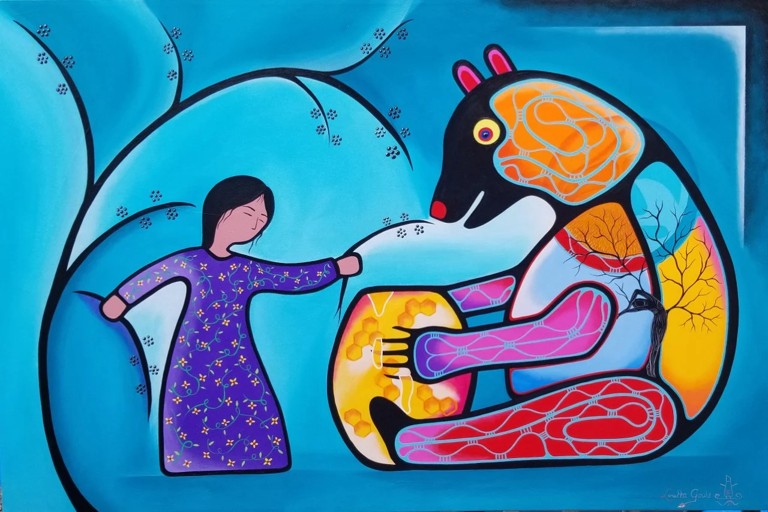Arts & Culture
Mi’kmaq Artists Featured in New Contemporary Exhibition
The Art Gallery of Nova Scotia unveils “Wapna’kikewi’skw”, showcasing innovative works by Indigenous women that explore land, language, and lineage.
Cole Martin | October 04, 2025 at 05:54 PM

A powerful new exhibition at the Art Gallery of Nova Scotia is placing the spotlight on contemporary works by Mi’kmaq women artists, marking a significant step forward for Indigenous representation in the province’s cultural institutions. Titled “Wapna’kikewi’skw” — a Mi’kmaq term meaning 'Women of the Dawnland' — the show features a diverse range of mediums, from textiles and sculpture to digital installations and performance video.
Curated by artist and scholar Elise Bernard, the exhibition explores themes of land, lineage, and language, presenting deeply personal reflections on identity and community. “These works aren’t just art — they are acts of reclamation,” Bernard said at the opening reception. “They speak to survival, memory, and the continuity of Indigenous knowledge systems.”
Among the standout pieces is a woven tapestry by Mary Jane Nevin incorporating birch bark, porcupine quills, and hand-dyed wool. Another, a digital projection by artist Sam R. Paul, overlays ancestral territory maps onto present-day landscapes, inviting viewers to reimagine familiar places through an Indigenous lens.
Visitors are invited not only to view the art but to engage with its meanings. Interactive components include a sound booth where guests can listen to Mi’kmaq-language lullabies and poetry, and a story circle space where community members can record oral histories to be archived alongside the exhibit.
The gallery partnered closely with local Mi’kmaq communities during the planning process, holding consultation sessions and ensuring artists had creative control over how their work would be presented. “It was important to create a space that honours the artists’ voices without filtering or translating their experience,” said gallery director Nina Proulx.
Younger artists, many showing publicly for the first time, are also included in the show. Their works often blend traditional techniques with modern forms — like beadwork paired with augmented reality. “This isn’t about preserving the past in amber,” Bernard said. “It’s about letting Indigenous art evolve in conversation with today’s world.”
The exhibition is also traveling beyond Halifax. Plans are underway to bring “Wapna’kikewi’skw” to community centres, libraries, and schools across Mi’kma’ki in the coming year, ensuring access to those who may not regularly visit the provincial gallery.
In conjunction with the exhibit, workshops and artist talks are being hosted throughout the month, including a basket-weaving seminar and a lecture on matriarchal leadership in Mi’kmaq society. All events are free and open to the public, with translation available on request.
For many attendees, the exhibition offers a rare opportunity to connect with living Indigenous culture beyond static museum displays. “It’s vibrant, it’s real, it’s alive,” said visitor Clarice Denny. “And it’s about time we made room for it in our institutions.”
“Wapna’kikewi’skw” runs through mid-November at the Art Gallery of Nova Scotia, and interest has already exceeded expectations. Organizers say the overwhelmingly positive response confirms what Mi’kmaq artists and communities have always known — that their stories, and their art, belong at the centre of the cultural conversation.